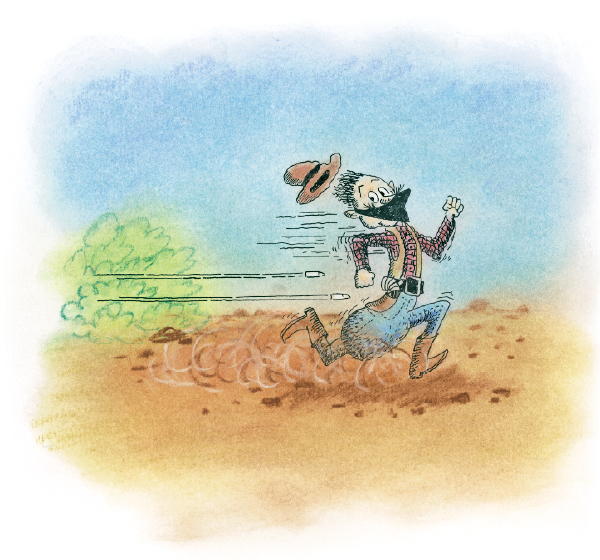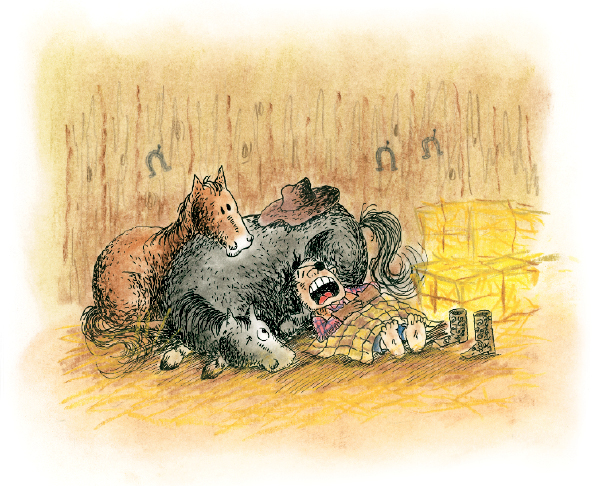Charley Parkhurst’s Secret
One of the most colorful figures during the California Gold Rush was Charley Parkhurst. He had a reputation for being the roughest, toughest, one-eyed, lantern-jawed, stagecoach driver who ever steered a six-horse team across mountains and through valleys in California — or anywhere else, for that matter!
Folks said he drove like a maniac, but could navigate treacherous roads with unmatched skill. He could drive his horses to the limit (and jangle his passengers’ nerves along the way), often covering 60 miles a day, over muddy or flooded roads — and make the return trip. Charley’s feel for the road always brought him through safely. Once, when the team of horses suddenly veered from the road, throwing Charley from the driver’s seat, he managed to hold on to the reins and eventually steer the horses into a clump of bushes, ending the wild ride. The passengers, shaken but thankful, took up a collection and gave their driver $20.
A horse had kicked Charley years before, blinding him in one eye and requiring him to wear an eye patch for the rest of his life. When asked how, with only one eye, he could see the road when the horses and wheels were kicking up clouds of dust, he simply said, “Don’t have to. I smell and hear it. When the wheels rattle, I know I’m on hard ground. When they don’t rattle, I look down to see if the road’s still there.”

His skill with a whip was legendary: They said he could use his whip to snap a cigar out of a fellow’s mouth at 15 paces. Though holdups on the stagecoach lines were common, bandits learned not to tangle with Charley. One day, on a run from Oakland to San Jose, a bandit held up the stage and ordered him to throw down the Wells Fargo cash box he was carrying. Charley, who was unarmed, did what the fellow demanded. But after that, he kept a six-shooter on the seat beside him. The next time he heard the same fellow, hidden beside the road, give the same order, Charley fired into the bushes and killed a wanted criminal. Word must have spread, because no one else tried to stop a coach that Charley was driving.
But Charley had a secret: She was a woman who pretended to be a man for almost 50 years! She was born Charlotte Parkhurst about 1812 in New Hampshire. When her parents died, she was placed in a Massachusetts orphanage, which she hated. All the children’s hair, boys’ and girls’, was cut short, so at 15 it was easy to disguise herself as a boy and run away. So the pattern for her life was set.
She got work in some stables, where she cleaned the stalls, pitched hay, and cared for the horses. In return, she received room and board and a small salary. But she had a natural talent for working with horses, and soon became an accomplished and popular driver. She earned the title of “Whip,” for her skill in handling a team. Soon she was asked to move west by two men who were starting a stagecoach line in gold rush territory.
She arrived in California in the early 1850s, and soon became famous throughout the Sierras as a fearless stagecoach driver. Though she was only of medium height, she had broad shoulders, a deep enough voice, and the hint of a moustache. With her boots, broad Texas hat, and gloves (which she wore even during meals), she was accepted as a man. With her face weathered by sun and wind and sporting her eye patch, no one thought otherwise.

At night, Charley would sleep with her horses in the stable. If anyone commented on this, she’d simply say, “I get along better with horses than folks.” She took excellent care of her “babies.” And any driver who mistreated his horses would find himself facing down Charley — whose reputation for being able to handle “himself” in a fistfight was legendary.
With the end of the Gold Rush era, Charley decided to retire after 15 years of driving coaches. She bought a stage station and ran it for a while, then became a farmer, raising cattle. In 1868, she cast her first vote in a national election, 52 years before the 19th Amendment, which gave women the right to vote, was passed.
Charley lived as a man until her death in 1879. It wasn’t until her body was being prepared for burial that her secret was revealed. The revelation shocked the community. People couldn’t believe she had carried on the masquerade for so long. But other drivers always remembered her fondly, as “pleasant and steady and sober” — one of the “boys” who did well. And one of the most colorful figures to emerge from the Gold Rush era.

